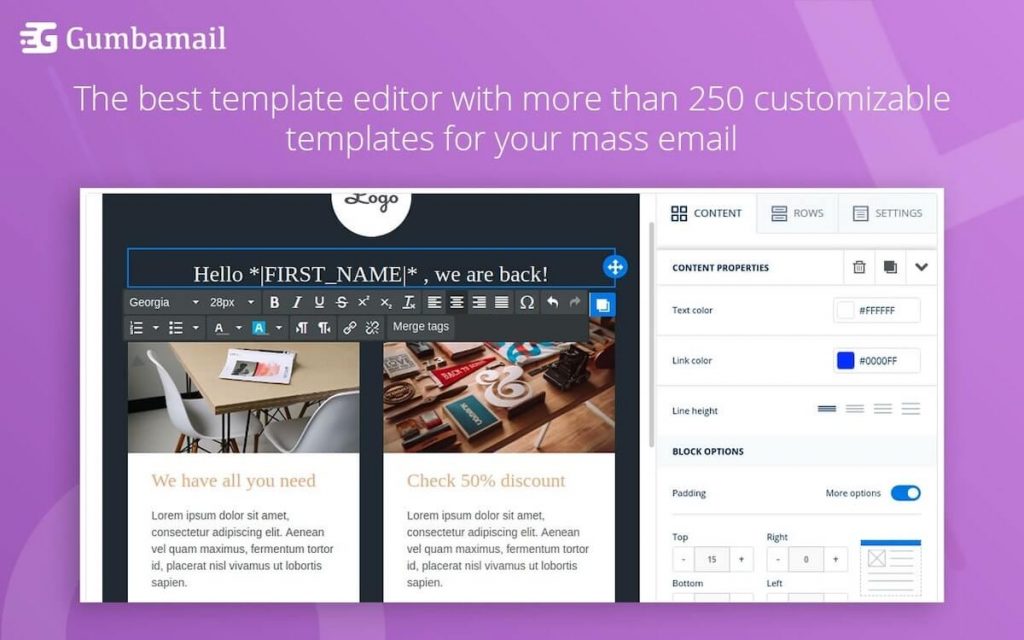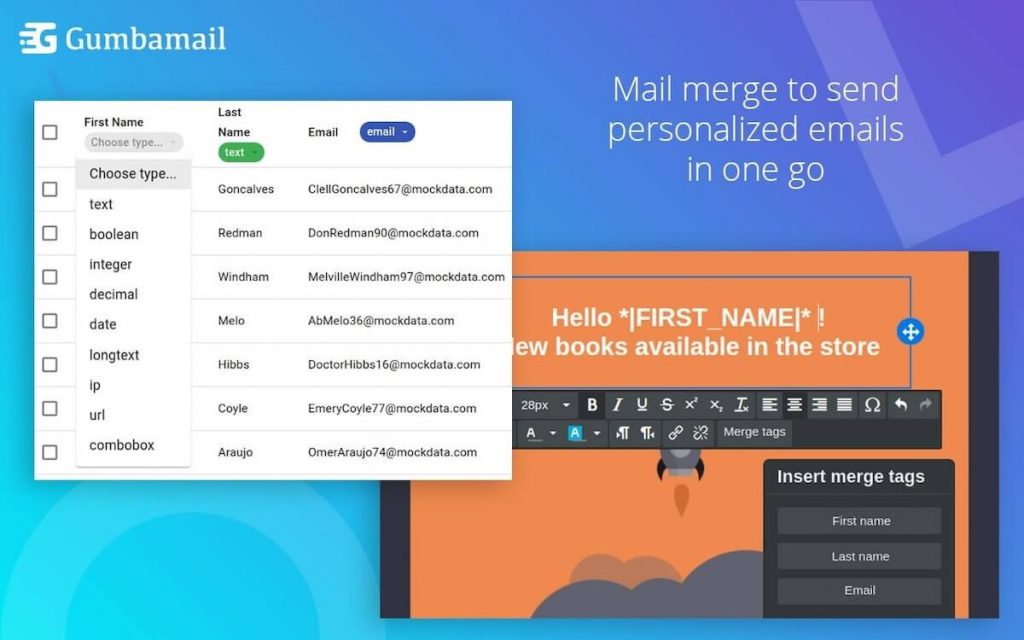5 Tips to Keep Your E-blast Out of the Spam Folder
As your business grows, you need to communicate with your customers at scale. Leveraging marketing channels like email can free up time and resources, but it comes at a cost.
Sending mass e-blasts to current and potential customers has a tendency to feel impersonal and intrusive. In fact, “blasting” your entire list time and time again is widely accepted as a poor marketing strategy — one that will spike your unsubscribe rate and potentially land you in the spam folder.
Fortunately, there is a (somewhat delicate) way to use e-blasts effectively, thereby deepening — not dampening — your connection with your audience. Below, we’ll explain how to use e-blasts the right way: to open a line of communication with your subscribers.
First Things First: The Connection Between E-blasts and Unsubscribes
Before we dive into how to use e-blasts effectively, you need to understand why most e-blasts are used ineffectively.
An email blast is a type of campaign consisting of a single email, sent to a large number of subscribers. Often these mass emails are sent to a company’s entire database, which poses a number of problems like:
- It’s impersonal: Many times, it’s very obvious these blasts were sent to a company’s entire email list. The reader will be well aware that the company doesn’t know their name, interests, or history with the company.
- It’s irrelevant: It’s highly unlikely that an entire database (composed of hundreds or even thousands of people) are interested in the same product launches, upcoming events, or recent news at your company. Therefore, they’ll read your message, think, “This doesn’t apply to me,” and unsubscribe.
- It feels spammy: Think about the last email message you flagged as spam in your inbox — why did you do so? Chances are, it used strong, salesy language, you didn’t care about the content, or you never signed up for the list in the first place.
Finally, sending out mass e-blasts without a clear strategy isn’t just cringe-worthy and downright annoying — sometimes, it’s against the law. According to the CAN-SPAM act put in place by the Federal Trade Commission (FTC), you must abide by certain guidelines to send bulk emails. While we’ll dive further into this below, your messages can’t use deceptive subject lines or contain misleading information, you must honor all opt-out requests promptly, and you must have each subscriber’s permission to land in their inbox.
5 Tips to Send E-blasts the Right Way

While e-blasts have a bad reputation within the content marketing industry, there are ways to send them effectively.
So, how do you know if you’re using email blasts the right way? One of the best indications is your unsubscribe rate. Depending on your industry, the average unsubscribe rate falls between 0.1-0.23%. If your unsubscribe rate is higher than average, it’s a sign that you need to make some changes.
To ensure every email marketing campaign you send feels relevant, personal, and valuable to your readers, try the following tactics:
1. Use Segmentation
If you make one change to your email marketing strategy regarding e-blasts, this should be it. Research shows that segmenting subscribers can increase conversions by 200%, making it well worth your time and effort.
Just because you’re sending an e-blast doesn’t mean it should go to your entire list. Instead, you should segment your list based on order history, relationship to the company (customers, vendors, partners, or leads), geographical location, or demographic data. That way, you can send your blast to only the segments that will be interested in the content.
Segmentation serves a dual purpose. First, it decreases the overall number of emails that subscribers receive from your company, thereby decreasing the chances they’ll unsubscribe. Secondly, it shows readers you’ve taken the time to understand their interests and will only send them valuable content based on those interests, thereby increasing engagement.
2. Personalize Your Emails
One way to separate yourself from spammers on the internet is by personalizing your emails. With personalization, you’ll write dynamic content in the subject line, salutation, or body of your message, making a mass email feel like a personal message from a friend. For example, one of the simplest ways to personalize a message is to include the subscriber’s first name. Write “Dear [Name],” in the salutation, making it feel as though it was written just for them.
Research shows that sending personalized offers to subscribers can increase a customer’s overall spend by 18%. Personalizing your emails shows readers that you took the time to understand their name, interests, and past order history and will only send them relevant content in the future.
3. Use a Double Opt-in
As a subscriber, there is nothing worse than receiving an email you never agreed to receive.
Let’s be blunt: Spam is annoying. Therefore, you need to have a subscriber’s written consent to send any e-blast. Even then, it’s usually a best practice to use a double opt-in.
A double opt-in is a confirmation message automatically sent to anyone who joins your list. A double opt-in is an effective email tactic because it forces the reader to manually say, “Yes, this is the type of content I wish to receive in the future.” That way, whenever they receive an e-blast from you, they know they willingly opted to receive that communication.
4. Make It Easy to Unsubscribe
Yes, you read that correctly.
According to the CAN-SPAM act, you need to — by law — make it easy for subscribers to opt-out of your email list. In other words, whenever you email clients, vendors, partners, or other individuals within your list, you need to have an unsubscribe link that’s clearly visible in the body of your message. Once someone unsubscribes from your list, you need to stop emailing them within 10 business days.
5. Ask Yourself, “Would I Want to Read This?”
Whenever you publish an email newsletter, fire off a promo email, or send any other type of blast, ask yourself, “Would I find this information valuable? Would I want to read this?”
Remember, the best emails are the ones that contain information that is valuable, relevant, and personal — so use those three factors when determining whether or not to send your e-blast.
In addition, remember that information that’s interesting or valuable to you may or may not be interesting to your readers (Psst! This is where segmentation comes in!). For example, if your company receives series B funding or hires a new VP of sales, that might be news-worthy to you or your partners, but might not impact your current and potential customers.
To Send E-blasts the Right Way, Use Gumbamail

An e-blast is a mass email sent to a wide variety of individuals — sometimes, your entire list. Unfortunately, e-blasts have acquired a bad reputation in direct marketing communities, as they’re often filled with spammy content or are irrelevant to readers.
Fortunately, there are strategies you can put in place to make your e-blasts valuable, personal, and relevant to readers. By segmenting your list, creating dynamic content, implementing a double opt-in, and honoring unsubscribe requests, you can leverage e-blasts to increase conversions.
To send e-blasts the right way, download the Gumbamail plugin. Gumbamail is the affordable, easy-to-use email marketing platform that works with your existing Gmail account. With Gumbamail, you get 800+ pre-designed email templates, custom fields and merge tags, and a drag-and-drop builder to make email design a breeze.
Ready to see how Gumbamail can transform your marketing strategy? Download the free plugin to get started.


